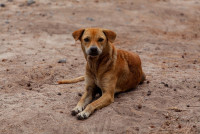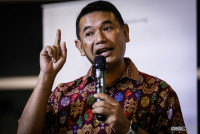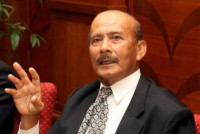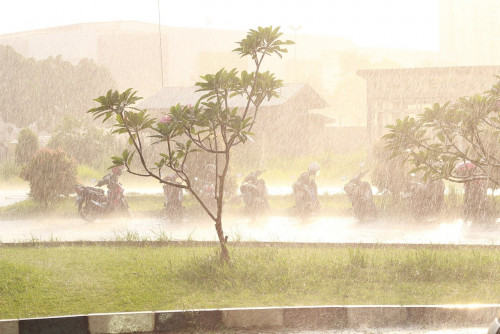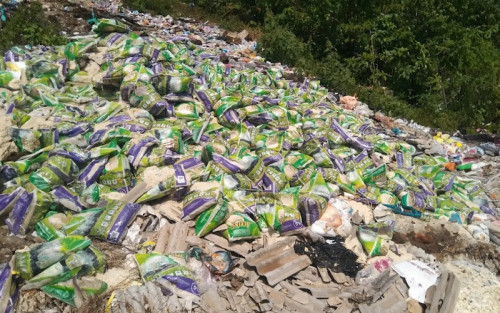SANDAKAN – Fulung, a 10-year-old male sun bear, saw Dr Wong Siew Te, the founder of the Borneon Sun Bear Conservation Centre (BSBCC), and quickly ran towards him.
“You’re a good boy Fulung, good boy,” Wong said lovingly while standing over the fence and watching Fulung from a close distance. Fulung looked happy to see Wong, as though he wanted Wong to pet him.
It was a lovely sight as Fulung, a friendly and fluffy bear seemed very attached to Wong.
However, Wong said that it is actually bad for Fulung to be behaving in that way.
“Bears must know how to fear humans in order for them to survive in the forest, because only poachers and hunters are in the forest; they must know how to escape from human presence,” Wong told The Vibes.
Unfortunately, Fulung has no fear of humans. He only feels happy when people around him.
Wong, a wildlife biologist, explained the reasoning behind Fulung’s behaviour.
It started in 2010, when a villager's hunting dog from a remote forest area of Long Pasia, Sipitang, found Fulung.
Fulung was only two months old at the time, and the villager, named Nooh, decided to take care of him.
However, when Fulung opened his eyes for the first time, he saw Nooh. Wong said that had made Fulung think that Nooh was his mother, and that he, too, was human.
“The first thing that Fulung saw in his life was a human, so [the idea of] human imprints on him. He thought that Nooh was his mother, and he became dependent on humans for food, protection, and shelter. He puts full trust to his mother, which in this case, was a human.
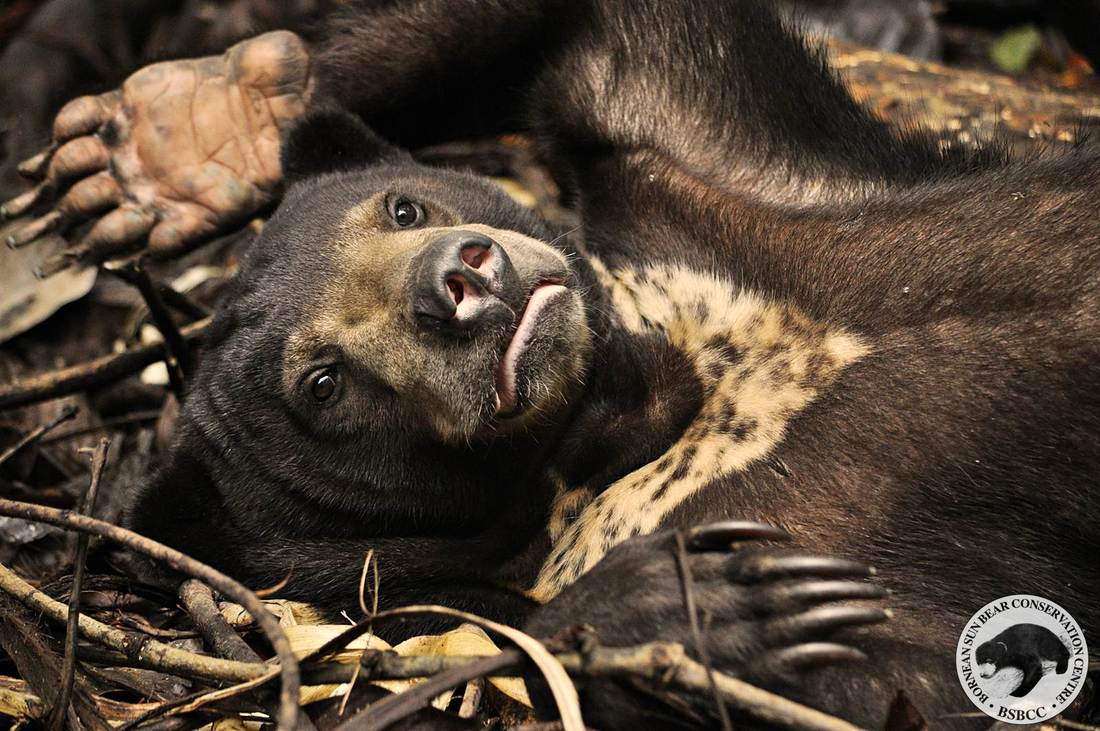
“Now, Fulung is 10 years old, but he is not afraid of people. He thought human beings are his own kind, and he considers himself human,” he said.
Wong said that if a bear does not know how to run away from people, it will end up getting killed in the wild.
“Naturally, when bears smell and sense human presence, they run away. That is a survival skill that Fulung does not have. Hence, Fulung is not fit to be released into the forest now,” he said.
Nooh gave him the name ‘Fulung’, which means “forest” in the native Lundayeh language.
Fearing that Fulung will be harmed by poachers, Nooh decided to keep Fulung as a pet. Fulung was kept in a cage for a few months, until Nooh realised that he could give him a better life.
He decided to surrender Fulung to the BSBCC, when Fulung was nine months old.
BSBCC, located in Sandakan, is the only sun bear conservation centre in the world. It had the space, facilities and capacity to care for Fulung.
Although Fulung was lucky to be discovered and placed in BSBCC, he had a difficult time adjusting to the new environment when he first arrived in August 2011. Despite his good health he was malnourished.
However, having been kept in captivity and in close contact with humans since he was born, Fulung felt that he was separated from his “mother” Nooh, and had a great need for comfort from humans.
Fulung would growl and bawl loudly, seemingly sad and in need of an emotional connection.
“Sun bear cubs will only growl long and loud when they are separated from their mothers,” Wong said.
He would also hurt himself by scratching his abdomen, to the point that his wound got infected and left scars.
Wong said that Fulung first started harming himself because of trauma, as he was still trying to adapt to his new surroundings. But interestingly, Fulung felt safe when the veterinarians surrounded him to treat his wounds.
Loving the attention that he would receive every time he hurt himself, Fulung would self-harm repeatedly just so that he would have humans around him more often.
The centre responded to Fulung’s behaviour by providing the best care through different enrichment activities to stimulate and encourage his natural behaviour.
Fulung was showered with love and attention at the centre. He was fed a proper diet that comprised of protein and fruits, and was provided with the necessary medical treatment.
The BSBCC also introduced him to a sun bear companion, to help him cope in his new environment.
“We started to see his progress each day. He started happily munching, ‘destroying’ and exploring everything. He began to adapt and would smell, taste, play and paw at things.
“Fulung is a very clever young male sun bear. Now, he is settling in well in the new environment. He is a charmer; we call him ‘the popular [one]’ as he knows how to charm his way around the females in his group.
“He is best known for loving to stand on his hind legs to get a better smell or look. He keeps busy and spends his days roaming around the free range enclosure foraging up invertebrates and [his] favourite food, basking in the sun, and taking a nap. He is also an excellent climber as he loves scaling the trees.
“Over the years, Fulung, with his scars around his abdomen, has now become one of the most confident bears at the centre,” Wong said.
Fulung is now doing what sun bears should do in the forest. However, he probably would not have fared as well if he had been left in the wild.
“Fulung might end up dead long ago due to malnutrition,” Wong said.
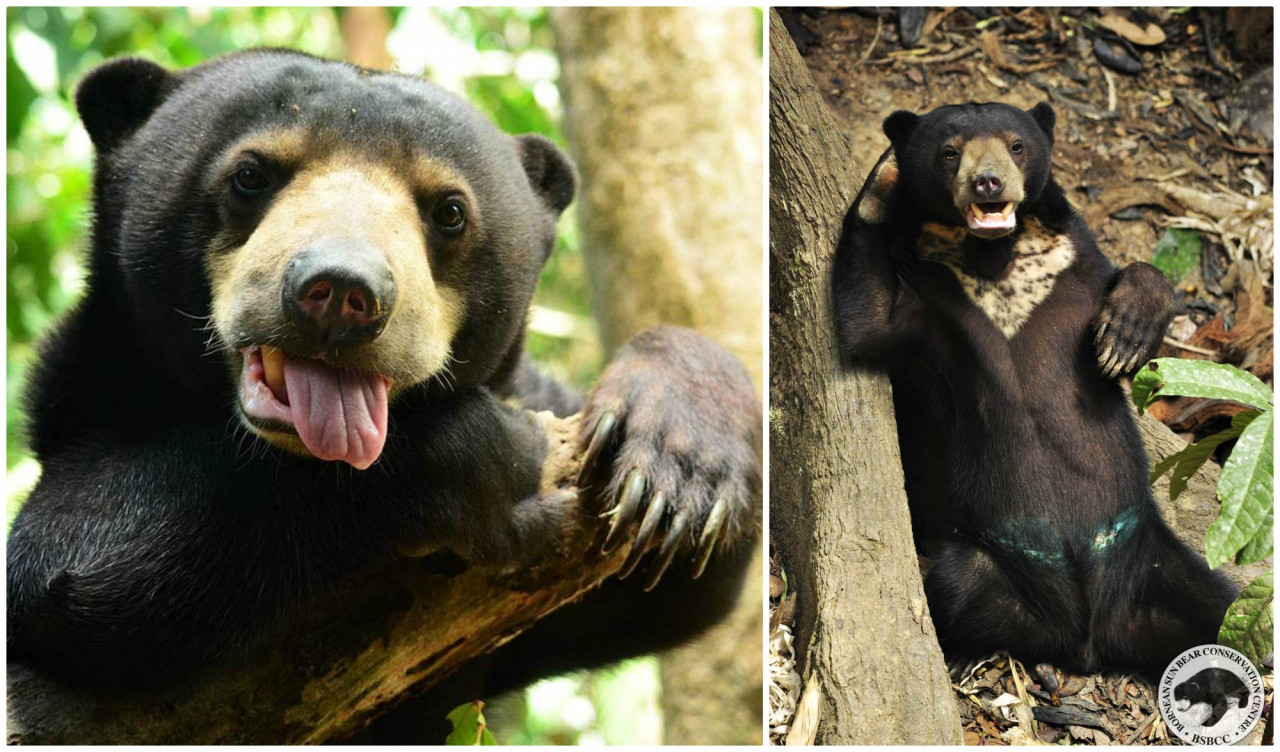
Where the BSBCC's bears come from
Fulung’s story is not new, Wong said, as all the sun bears at the centre come from similar backgrounds; they were all rescued from illegal petkeeping, and some were even kept in recreational parks and zoos.
Over the last 12 years, the centre has housed 65 sun bears, and is now caring for 45 of the species. All of the centre's sun bears were kept in captivity before they being rescued.
But why is it bad for people to keep them as pets, if their owners feed and take care of them?
Betung, a female sun bear cub, is another example of a bear who cannot survive independently in the forest, as she lacks a fear of humans.
She is the latest rescue at the centre, who was found by a villager in Kampung Betung, Ranau, when she was about two months old. She had been kept as a house pet in a chicken wire mesh cage and was fed with infant formula milk.
When she reached the BSBCC this past August, Wong said that they were shocked with her small size and weak body.
“Betung was around five to six months old when she reached the centre. She was supposed to weigh 10kg, but she weighed 1.5kg. Can you imagine how seriously malnourished she was when she got here?
“We have other bears, like Mary, who has stunted growth due to being malnourished when young. We have a bear that walks in a circle because it was confined in a small cage for a long time.
“This is what happens when people don’t know how to take care of a bear, and yet they have a bear as a pet. It is illegal for a reason. All the bears that came to the centre suffered from [a] serious level of malnutrition. This must be stopped.
“People have to be aware that keeping sun bears as pets is not cool. Don’t do it,” he added.
They may think that they are protecting and caring for the bears, but without the proper knowledge and facilities, the ‘pet owners’ end up 'unknowingly' torturing and slowly killing the bears.
Wong said the lack of awareness in the community about illegally keeping sun bears is why he had set up the BSBCC.
Malayan sun bears are the smallest bears in the world and are only found in Southeast Asia.
The total sun bear population has declined by at least 30% in the last 30 years, contributing to sun bears being classified as 'vulnerable' in 2007 meaning they are at high risk of extinction in the wild.
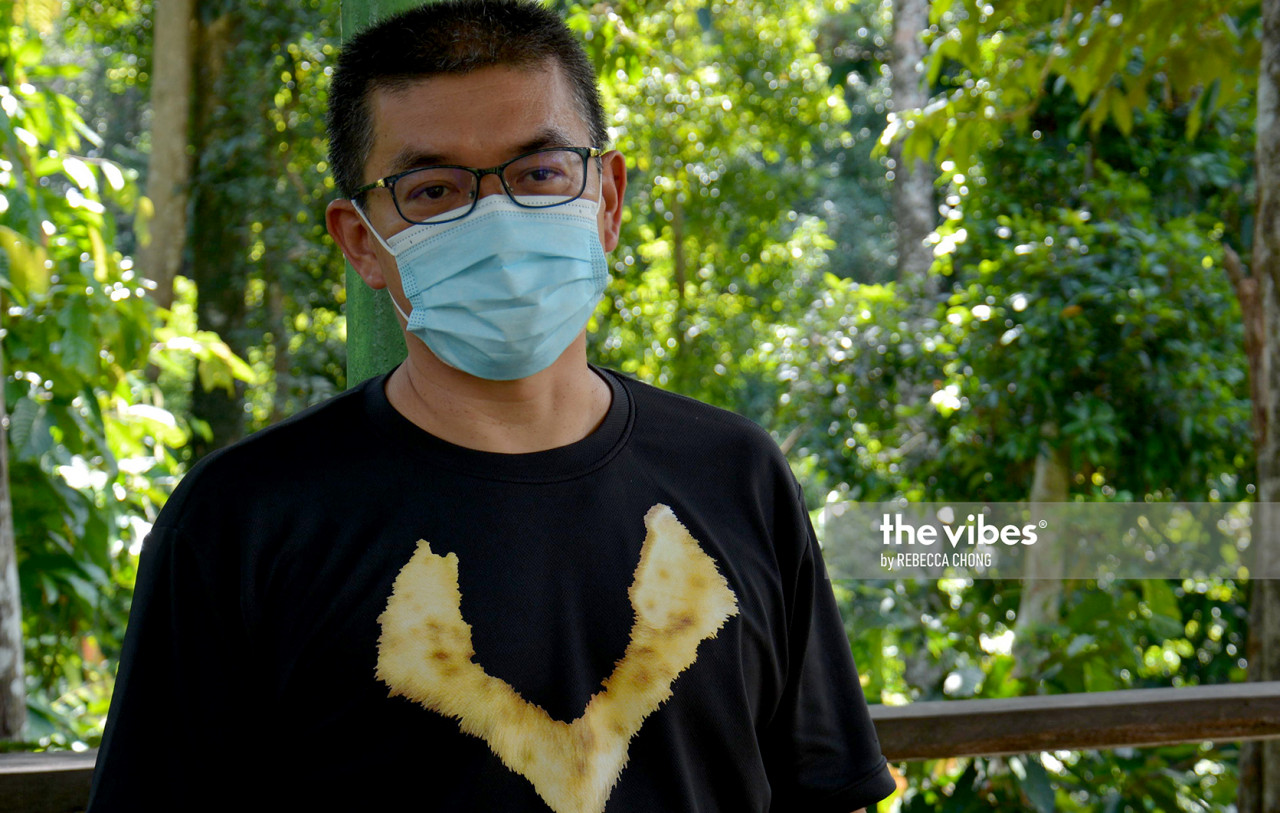
Dr Wong founds the BSBCC
Originally from Penang, Wong first came to Sabah 22 years ago to study wild sun bears in Danum Valley, Lahad Datu, as part of his Master's Degree project for the University of Montana, in the United States of America.
But while studying the bears, he learned of issues affecting the animals, such as illegal poaching, illegal pet keeping, and illegal selling of bear parts and so on.
He thought these problems must be resolved, and the people in Sabah must become aware that keeping sun bears as pets is equivalent to torturing and killing them.
He then started working towards setting up the BSBCC while completing his PhD project.
In 2008, exactly 10 years after he first came to Sandakan, he established the BSBCC. By that point Wong had decided to dedicate his life to protecting the sun bears of Sabah.
“A centre like this is essential; first, to help Sabah state government to take care of the bears. They do not have the centre, the capacity, the resources nor the interest to take care of the captive bears, so I stepped in to offer my help.
“Secondly, we need to educate the public that keeping sun bears is illegal, it is not cool. Then we conduct research to know more about the bears at the centre, as well as the wild bears in the forest,” he said.
The centre was set up in collaboration with Sabah Wildlife Department, Forestry Department, and a non-profit organisation named Leap (Land Empowerment Animals People).
Other than providing a home for the bears and giving them the best care, the centre also promotes sun bear conservation in Borneo through animal welfare, conservation, rehabilitation, education, and research.
“All our sun bears in the centre are orphaned. Because a cub bear is always with its mother, no exception. So when people find and keep cub bears as pets, we would assume that the mother has died.
“We have never encountered adult bears that were captured and kept as pets because they are so aggressive and ferocious, but we have adult bears that have been illegally kept in captivity for 18 years,” he said.
The sun bears at the centre were rescued by the Sabah Wildlife Department’s Rescue Unit. When someone reports that a certain place has a wildlife pet, the unit will send its enforcement officers and rescue team, who will then send the sun bears to the centre.
The sun bears at the centre are also eventually released into forest reserves in Sabah when they are healthy and are seen to be independent enough to survive in the forest.
To date, the centre has released eight bears into the wild.
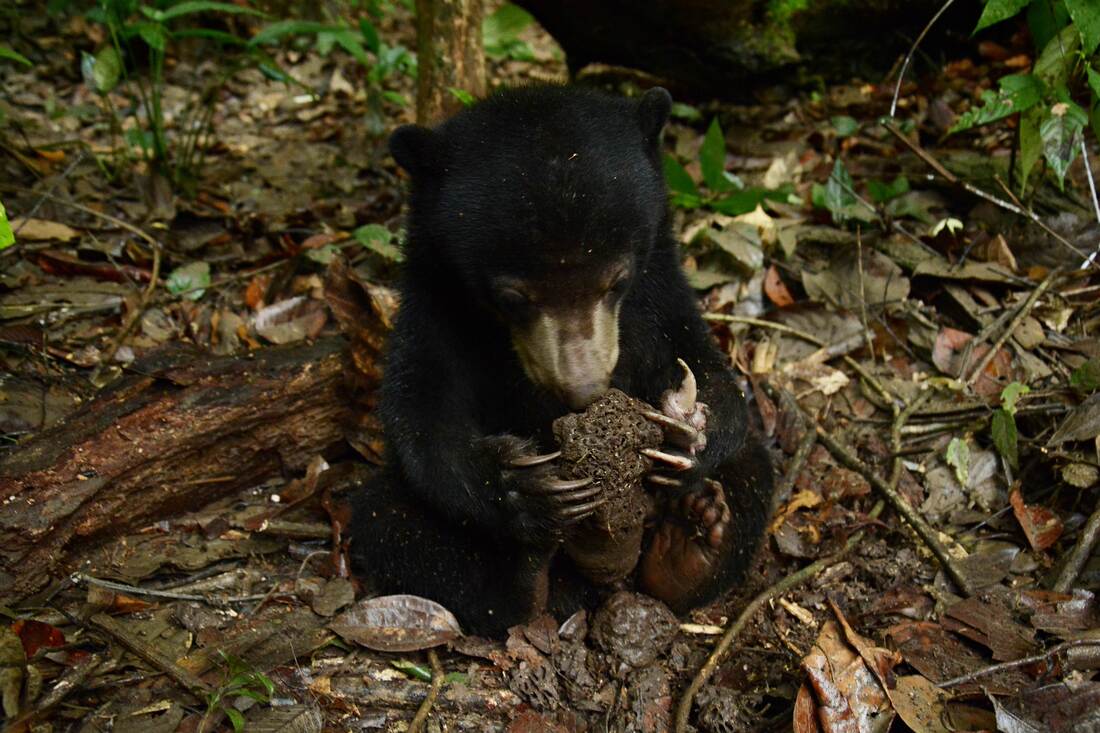
Funding for the bears
Over the years, the centre has been funded by many parties, but there has been no definite and fixed sources of income.
For development such as the building of walkways, bear houses, and observation platforms, the centre received funds from the federal Ministry of Tourism, Arts and Culture, and state Ministry of Tourism, Culture and Environment. It has also been supported by corporate bodies - the biggest being Sime Darby.
In2014, six years after the BSBCC started running, it opened its doors to the public. Since then, the centre was able to generate income through ticketing and souvenir sales.
Located opposite of the Orang Utan Rehabilitation Centre, the BSBCC has been attracting a number of visitors, both foreign tourists and locals. Before the pandemic, the ticketing revenue could cover 80% of the centre’s operational cost, which is about RM120,000 per month.
However, since the movement control order (MCO) was put into place in March 18, the centre has been facing difficulty securing funding since it has been shut down to date.
“It has been very difficult to cope. We have been asking for people to donate to us. In the meantime, we are dependent on Sime Darby’s grant for next year (for partial operational cost). The Hasanah Foundation has been supporting our bear food for six months,” he said.
But it is barely enough.
Wong said the centre has come up with all sorts of ways to generate revenue to keep the centre running.
The BSBCC is running a bear adoption programme, where anyone can adopt a sun bear, either through a Share Bear Adoption at RM200 a year, or My Bear Adoption at RM600 a month or RM7,200 a year.
It has also started a Virtual Safari Experience where Wong would provide a virtual tour of the centre, showing them the sun bears from up close, and talk about bear ecology, biology, conservation, and answer questions from participants.
The one-hour virtual session, which usually ends later than scheduled, is charged at RM40 per person. Wong said the participants are from all over the world, including Australia, Hong Kong and the United Kingdom.
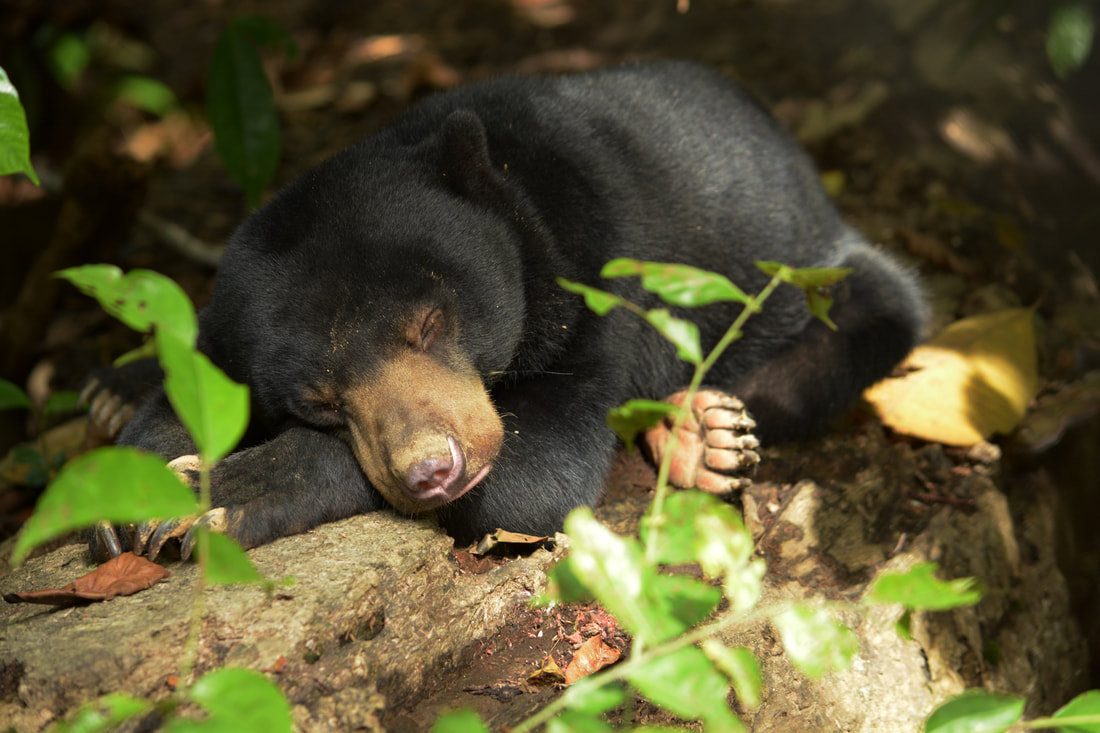
Coping amid the pandemic
Since the centre has lost its main source of revenue to the pandemic, it has been using its savings to keep the centre running for the past 10 months.
“But our savings will be depleted soon, and when it does, we might face closure,” Wong said.
Wong is afraid to even think about the possibility of closing the centre as the conservation of sun bears in Sabah depends on the centre. Not to mention the survival of the 45 sun bears that are currently housed there.
“We cannot fail. The work that we are doing is so important, we cannot fail. If I fail, I fail the bears, I fail the people,” he said.
Wong said that it is time for the government to assist the centre as best they can.
The centre could be financially independent before the pandemic through tourism, but it is a different story after the pandemic.
“This year was supposed to be a good year as it is Visit Malaysia 2020. We were supposed to welcome a lot of tourists, make a lot of money, improve livelihood of the locals. All was in good shape until this pandemic.
“That is why we need the help of the government. The bears and facilities belong to the government, so I think they should help us as much as possible,” he said.
Wong said over the last 12 years, especially the last six years after the centre was opened to the public, the sun bear conservation model at the centre has been proven to work fantastically.
“We could generate revenue from tourism, run our centre, take care of our bears, and run our programmes like rehabilitation, education, research and so on. At the same time, we meet the need for the people to have a great visiting experience. And our stories, the bears’ stories, the rainforest story – there are so many interesting stories to be told to the public.
“This can improve the livelihood of the locals, so they do not need to become poachers, but they can become tour guides, for example. This is a win-win situation for all,” he said.
Wong said that for the past six years, the centre has become an important tourism attraction, especially in Sabah.
“How shameful would it be if we fail now and have to close down now due to the pandemic. Plus, for me, I know that the work we do is so important that failing is not an option.
“I just hope that in a year a so, life will be back to normal. I have to be optimistic,” he added. – The Vibes, December 20, 2020



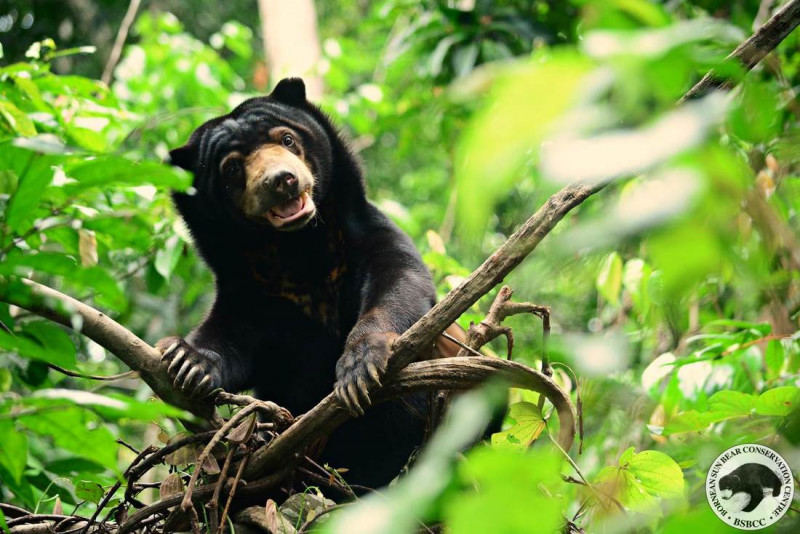

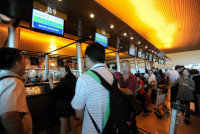
_visiting_the_Penans_of_remote_Belaga_district_in_central_Sarawak._Pic_by_Harry_Wing.jpg)

